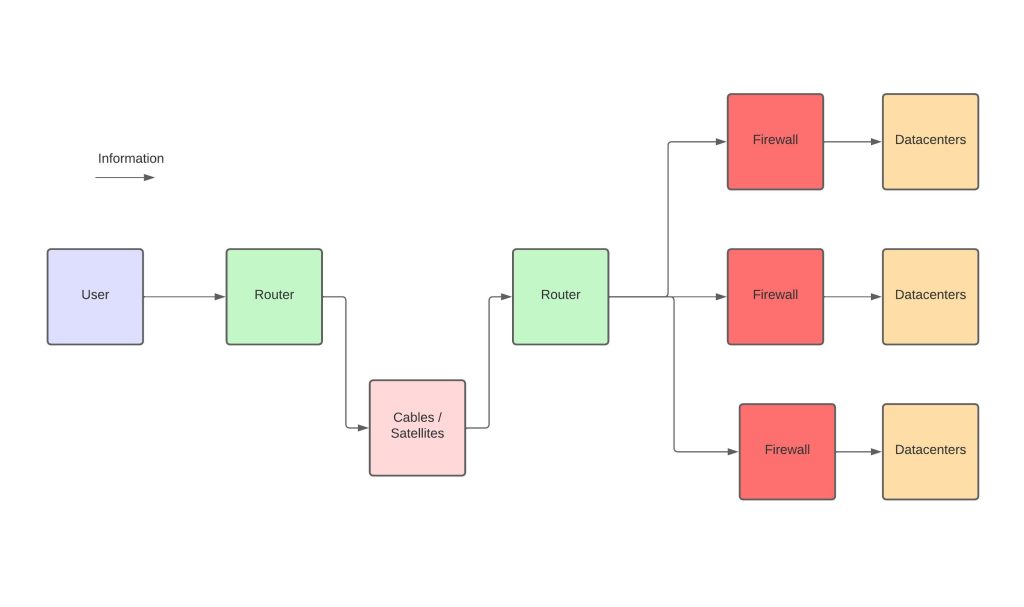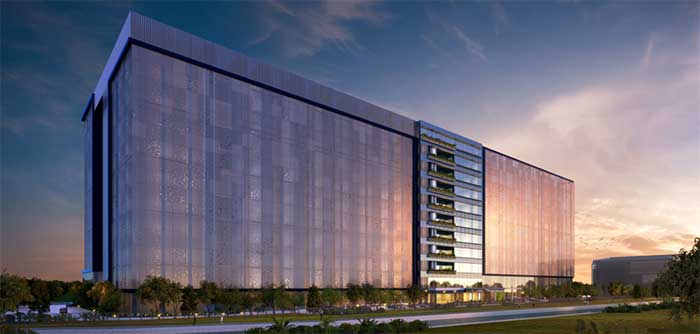A little bit of context :
We all know the internet as an intangible entity, a digitized world on its own. However, the internet has a physical reality. In this three posts series, we will explore three representations of the internet. We will question them and challenge those representations with the reality of the internet to see how accurate they are.
2 – Data centers : the heart of the information
When you think “physical representation of the internet” another thing that comes to mind are data centers.
A data center is a facility dedicated to storing, organizing, receiving and sending data. But how does it work and why is it “Internet”. Actually, it is only half of the internet. Let me explain. The internet is defined by the Oxford dictionary as “an international computer network connecting other networks and computers that allows people to share information around the world”. The internet is therefore a combination of the information and the means to share it. As seen in my previous post, cables and satellites are the way the information is shared. Data centers are the storage of this information. When you search something on the internet, you actually request data. In a simplified way, you ask the router to find the way to the information, ask it, retrieve it, and send it to you. This process may appear simple but it is the architecture of the internet itself.

Usually, people know about this so I may have not taught you anything. However, you might not know some interestings facts about data centers. I gathered 3 facts to know better about the storage of our information :
Fact number 1 : We don’t know the actual number of data centers
Indeed, Synergy Research found that the 19 biggest internet operators run around 700 data centers but they grow fast. According to researchers , the amount of data should double in the next two years and so is the number of data center. And keep in mind those are the data centers we know about.
Fact number 2 : most of internet traffic is actually within data centers themself.
Up to 77% of data transfers are within data centers. Indeed when you store information in the “cloud” for example, your data is stored in a data center. But what if your data center is destroyed despite all the security measured ? Last year, an incendi destroyed a data center from the french company OVH. We then discovered that data is always supposed to be stored at different locations. OVH, who failed to do that, was fined twice and still is in court. This explains the graphic : your data is always backed by multiple servers, hence the need for communication within data centers to search and store your information.
Fact number 3 : data centers are an environmental threat.
Indeed data centers are needy for energy for two purposes : networking and cooling. The first one seems obvious looking at the precedent fact : data centers need a lot of energy to make thousands, sometimes tens of thousands of computers running to search, index and store information. The second one is the direct consequence of the first one. Regular cooling systems like fans or water cooling at the scale of our computer would just not work at this scale. Therefore data centers need sophisticated cooling systems as oil baths for computers. However, if data centers consume a lot of energy, they do better every year to lessen their impact on the planet. Of course they present it that way but the reality is that 2% of energy saved is 2% they don’t pay and at this scale, it matters.
Conclusion :
Data centers are the heart of the internet by providing the information and representing a major part of the internet networking. They improve every year both in technology and for their impact on the planet. And last but not least : data centers are so vital for the internet and the companies (and government) that use them that they are often in secret locations or so secured a bank would be ashamed of its security. This is what the internet look like :





Recent Comments